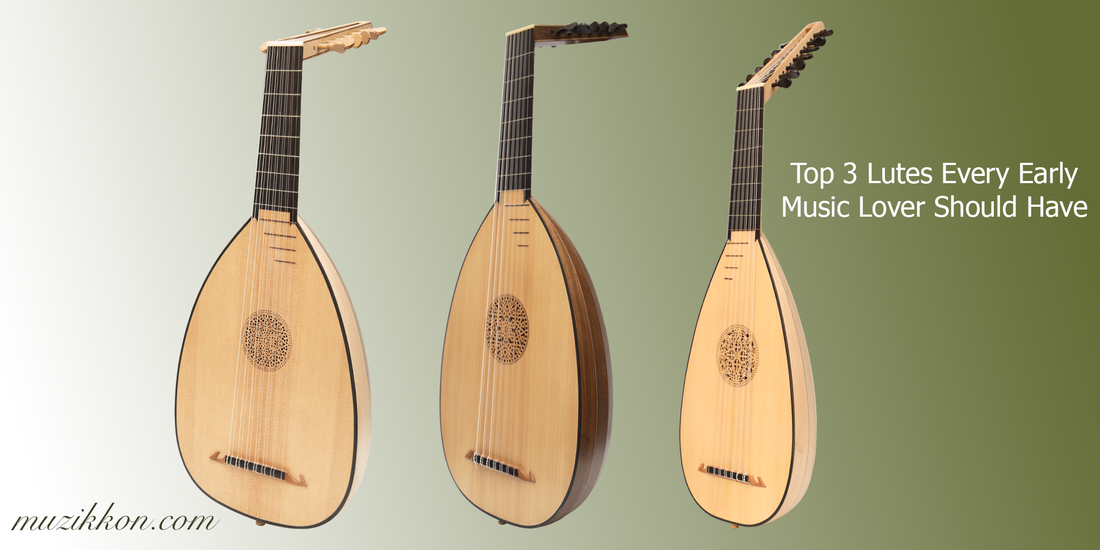Lutes occupy a singular place in the story of music. With their gentle voice and delicate resonance, they embody the tonal aesthetic of the Renaissance and Baroque eras. For the early music enthusiast, a lute is not just an instrument—it is a bridge to centuries of repertoire, performance tradition, and craftsmanship. While there are dozens of lute types reflecting different periods and regions, three stand out as essential for anyone serious about early music performance or study.
Renaissance Lute: Foundation of Repertoire and Technique
The Renaissance Lute is often the first stop for those entering the world of historical plucked strings. With six to eight courses (pairs of strings), a rounded back, and gut frets, it offers a tonal clarity that suits polyphonic music. Composers such as John Dowland, Francesco da Milano, and Vincenzo Galilei wrote prolifically for this instrument. Its tuning, typically in fourths with a third in the middle, is approachable and logical, allowing musicians to explore a wide corpus of solo works, dance suites, and vocal accompaniments.
The Renaissance lute’s popularity across 15th- to early 17th-century Europe also means there is a rich tradition of surviving tablature, offering deep insight into period playing styles and ornamentation. This lute remains the most versatile option for performers interested in bridging late medieval and early Baroque styles. Those seeking a carefully crafted version can explore the lute guitars collection, which offers several historically informed models designed for tonal authenticity and playability.
🔗 Shop Renaissance Lute
Descant Lute: A Bright Voice for Ensemble and Solo Work
Smaller and higher-pitched than the standard Renaissance lute, the Descant Lute offers a brilliant, clear tone that is ideal for both solo performance and ensemble playing. Typically tuned a fourth or fifth above a standard lute, the descant is especially effective in consort settings, where it adds a shimmering top voice that can project above the texture. Its reduced size and shorter string length also make it a comfortable option for players with smaller hands or for those seeking a more agile and responsive instrument.
Descant lutes are often used to perform soprano or treble lines in Renaissance and early Baroque lute music. Despite its specialized role, the descant lute opens up many possibilities for historically informed performances. For those interested in period-appropriate ensemble playing or looking to expand their tonal range, the descant lute provides a crisp, articulate voice that complements the broader lute family. You can explore well-made models in the lute guitars collection, which includes options focused on historical dimensions and tonal clarity.
🔗 Shop Descant Lute
Travel Lute: Portability Without Compromise
Built for musicians who are frequently on the move, the Travel Lute offers a compact and lightweight version of the traditional lute without compromising its core tonal qualities. While it maintains key features such as the rounded back, tied frets, and gut or synthetic strings, the travel lute is constructed with portability in mind. Many models use durable woods and slightly reduced body sizes to allow for easier transportation and handling.
The travel lute is ideal for students, touring performers, or anyone with limited rehearsal space. It serves well as a practice instrument, a travel companion, or a backup lute for performances in variable conditions. Although it may not deliver the full depth of resonance found in larger instruments, a quality travel lute offers impressive warmth and clarity for its size. It is also a practical second instrument for experienced players seeking something more portable. The Lute Guitars section features several travel lute models designed for convenience, tone, and visual appeal.
🔗 Shop Travel Lute
Closing Thoughts
The lute continues to captivate musicians with its expressive subtlety and historical richness. Whether you begin with a Renaissance lute for its versatility, explore a descant lute for its brilliance, or choose a travel lute for its practicality, each one offers a unique connection to early music traditions. Your choice will reflect your musical direction, technical preferences, and performance setting.
For those looking beyond traditional lutes, the Acoustic Guitars collection includes instruments influenced by early design and craftsmanship. These options provide additional ways to engage with the sound world of the past, not just as history but as a living, breathing form of musical expression.

